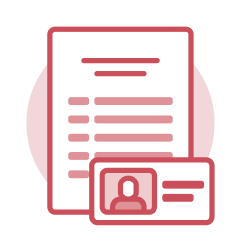General Finance and Financial Accounting
General Finance and Financial Accounting encompasses accounting journals, ledgers and ledger accounts, revenue and spend categories, and the Period Close business process.
Training courses help you understand how financial activities are distributed and adjusted in Workday through journals and accounting adjustments. You will learn how to create journals, reverse journals, create accounting adjustments, and review journal errors.
Topics:
Related Learning Hubs:
 Accounting Journals
Accounting Journals
Financial accounting in Workday is separated broadly into two types of journals: operational journals and accounting journals. Operational journals are automatically tied to operational transactions, while accounting journals are created manually to allocate funds for accounting purposes. Accounting journals in Workday perform the same functions as the Auxiliary Voucher (AV), Distribution of Income and Expense (DI), Transfer of Funds, Journal Voucher (JV) and similar financial processing documents used to move funds.
Operational Journal versus Accounting Journal
- Operational journals are created automatically in the background when an operational transaction is approved. Examples of operational transactions include: supplier invoices, customer invoices, purchase orders.
- Accounting journals, on the other hand, are created manually for accounting purposes. Workday does not automatically tie these types of journals to transactions.
- To preserve financial data security and integrity, accounting journals require a series of approvals from driver worktag managers and Central Office accountants.
Adjustment and Reversal Journals
- These journals are created at period close for adjustments and accruals for the purpose of creating accurate financial statements.
- When creating a journal, selecting Reversal Journal first creates a journal which then reverses itself on a future date of your choice. Typically reversal journals are used for year-end accruals.
Spend and Revenue Categories
- Spend Category – This is a type of worktag used on a transaction to classify expenses at a detailed level for internal reporting purposes. Spend Categories are similar to KFS Expense Object Codes.
- Revenue Category – This is a type of worktag used on a transaction to classify income at a detailed level for internal reporting purposes. Revenue Categories are similar to KFS Revenue Category Object Codes.
Tasks
- Create Journal – Journal Entry role holders and Accountants use this task to initiate accounting journals.
- Copy Journal – Copying a journal preserves all its attributes so Journal Entry role holders and Accountants only need to make updates where necessary. This task is also used to reverse a previously posted journal to correct errors, which is separate and distinct from the Reversal Journals concept above.
- Create an Accounting Adjustment – Journal Entry role holders and Accountants use this task to make corrections to ledger accounts, revenue or spend categories, or worktags on an approved, settled, financial transaction like a supplier invoice or purchase order.
This table includes the relevant course(s). You can enroll in courses at any time on the On-Demand Courses page.
| Course Title | Description |
|---|---|
| Introduction to Accounting Journals | This course helps you understand how costs are distributed and adjusted by leveraging accounting journals and accounting adjustments. You will learn fundamental accounting concepts and then how to create journals, reverse journals, review journal errors, and create accounting adjustments. |
For Campus Units & Central Office:
 Period Close
Period Close
Closing financial activity to campus users and running financial statements and reports happens at the end of each month and fiscal year. In Workday, when the Period Close Specialist initiates the Period Close business process, it triggers notifications to be sent to finance users throughout UMD campuses/institutions to complete tasks and activities related to period close.
Period Close Work Area
- Period Close Specialists, Accounting Managers, and Accountants can use this area to monitor progress of period close tasks, view metrics, and track how long it takes to complete period close activities.
- Period Close Specialists and Accounting Managers can also use this area to send notifications and reminders to users to complete period close tasks assigned to them.
Account Certification
- Account certification is a business process used to certify the accuracy of accounts on a balance sheet or financial statement in Workday.
- To create a system of checks and balances, you can configure account certification preparers, reviewers, and approvers when creating account certification sets.
Applications (Apps)
- UMD Financial Reports – Central Office Finance users can use this app to quickly retrieve income statements, balance sheets, operating budget vs actuals reports, and fund balance reports.
Tasks
- Start Period Close – This is the task the Period Close Specialist initiate to kick off the entire period close process.
- Roll Beginning Balances – As part of the fiscal year-end close process, Period Close Specialists and Accounting Managers use this task to roll final balances from the closing year into the new fiscal year.
- Roll Forward Procurement Documents – As part of the fiscal year-end close process, Accounting Managers roll open purchase requisitions, purchase orders, and supplier contracts into the new fiscal year.
- Close Fiscal Year – After all period close activities are completed, the Period Close Specialist uses this task to close the ledger year to all further financial activity. This task also closes all activity for each individual month in the fiscal year.
